I am wanting to make a motor driver using a SN754410 Quadruple Half-H Driver IC.
The SN754410 requires external flyback diodes. Here is an example circuit:

My question is, how do I choose which diodes to use? Two popular choices seem to be the 1N5819 and the 1N4007, but I don't know why.
What factors are involved in choosing suitable flyback diodes?
I'll speculate:
- Cost
- Current rating (motor operating current, or higher?)
- Voltage rating (motor operating voltage, or higher?)
- Switching time (does this matter with flyback diodes?)